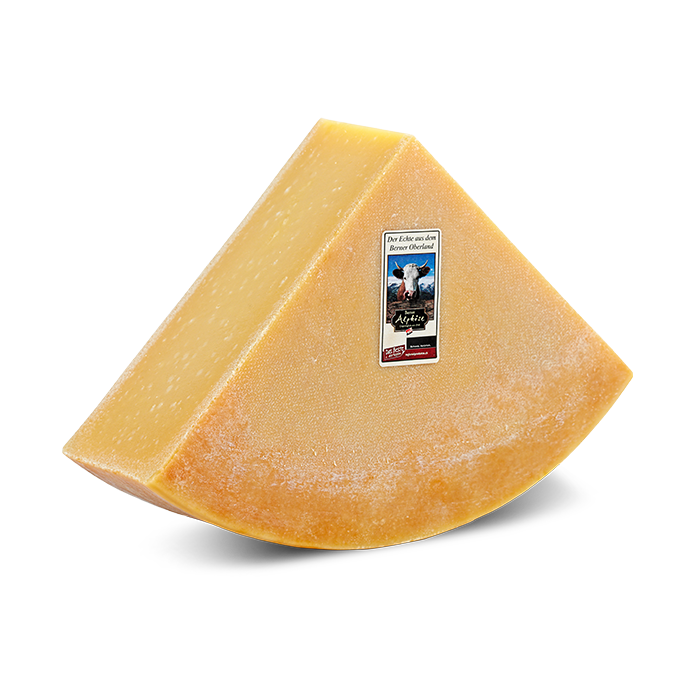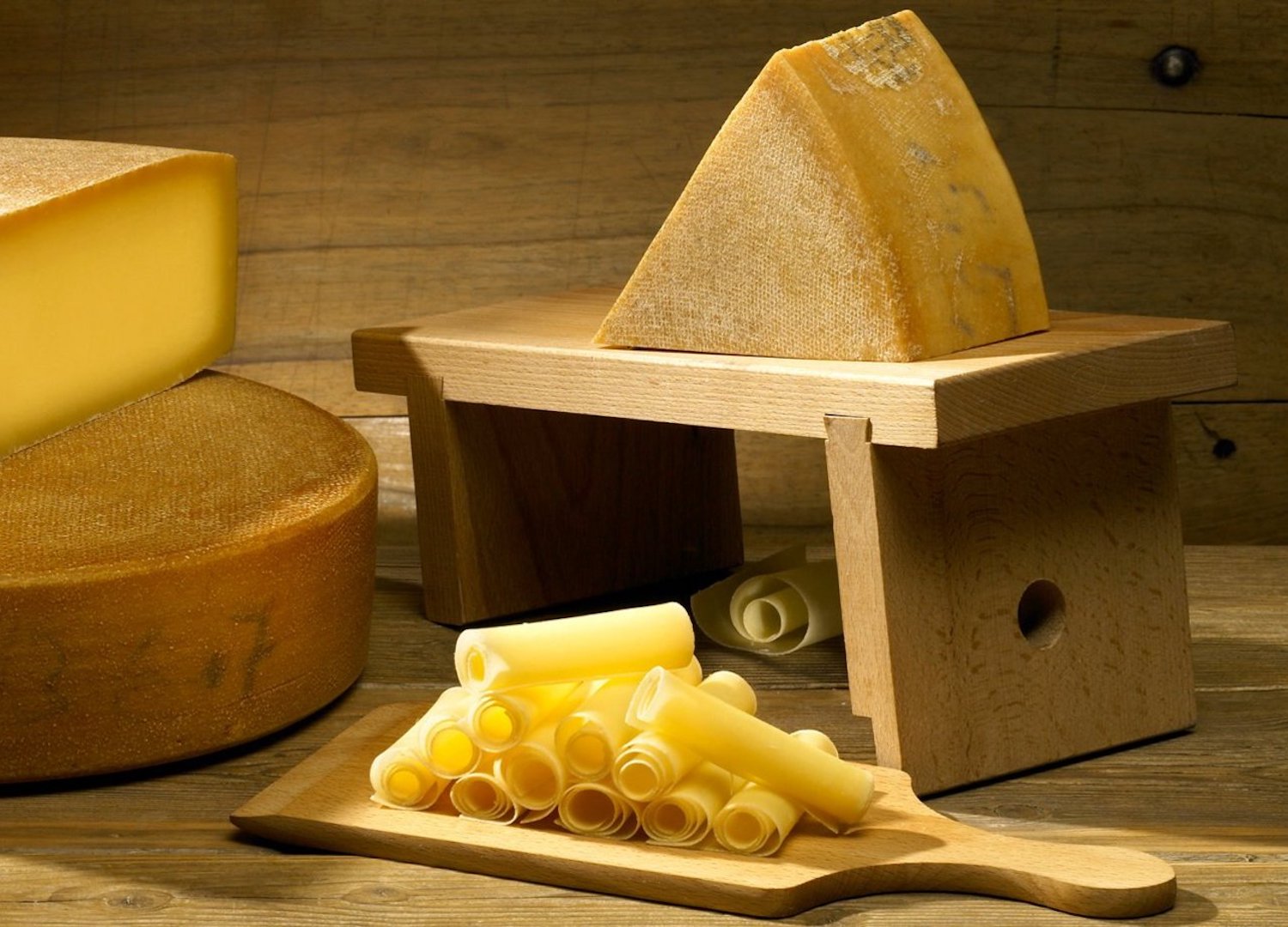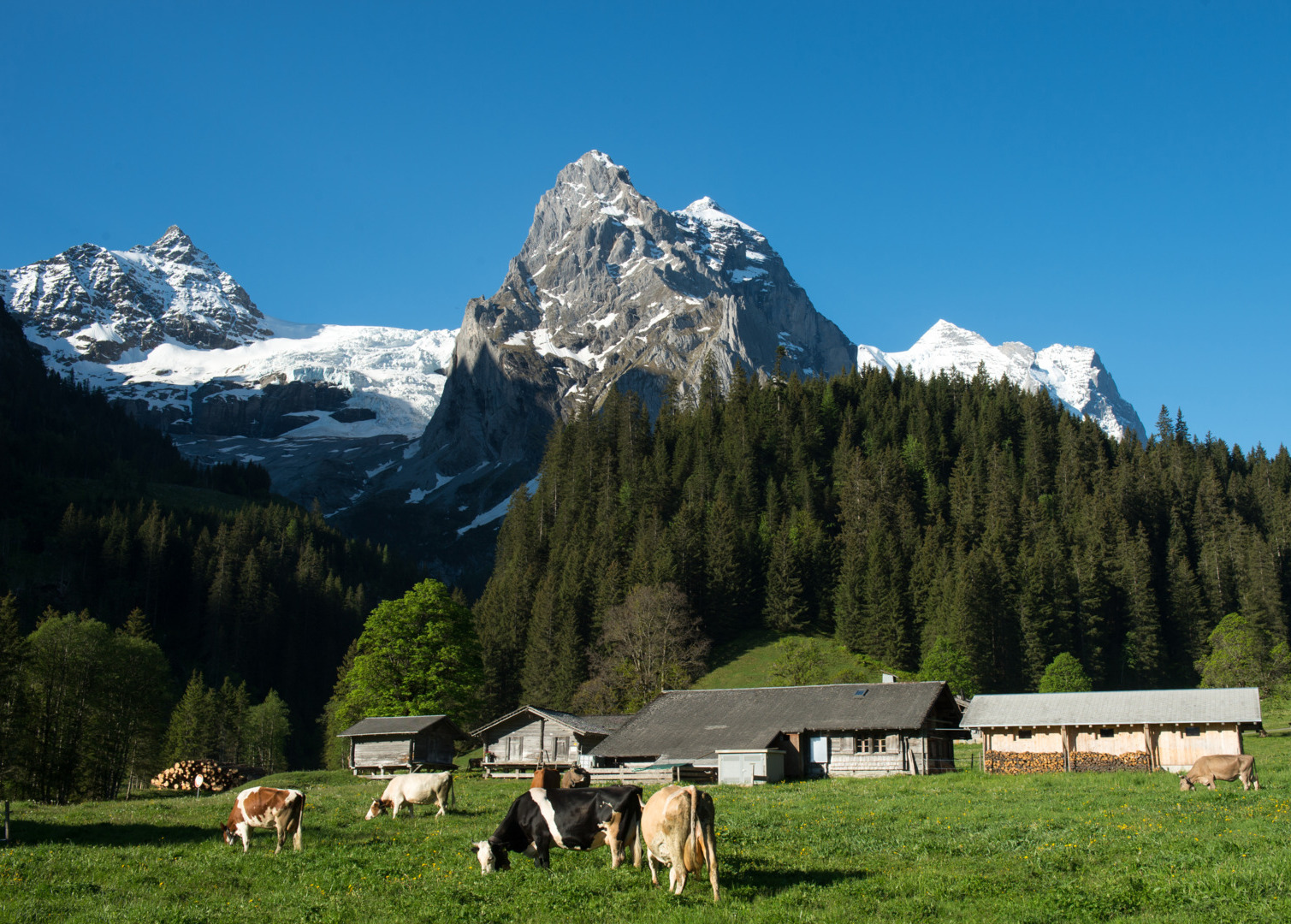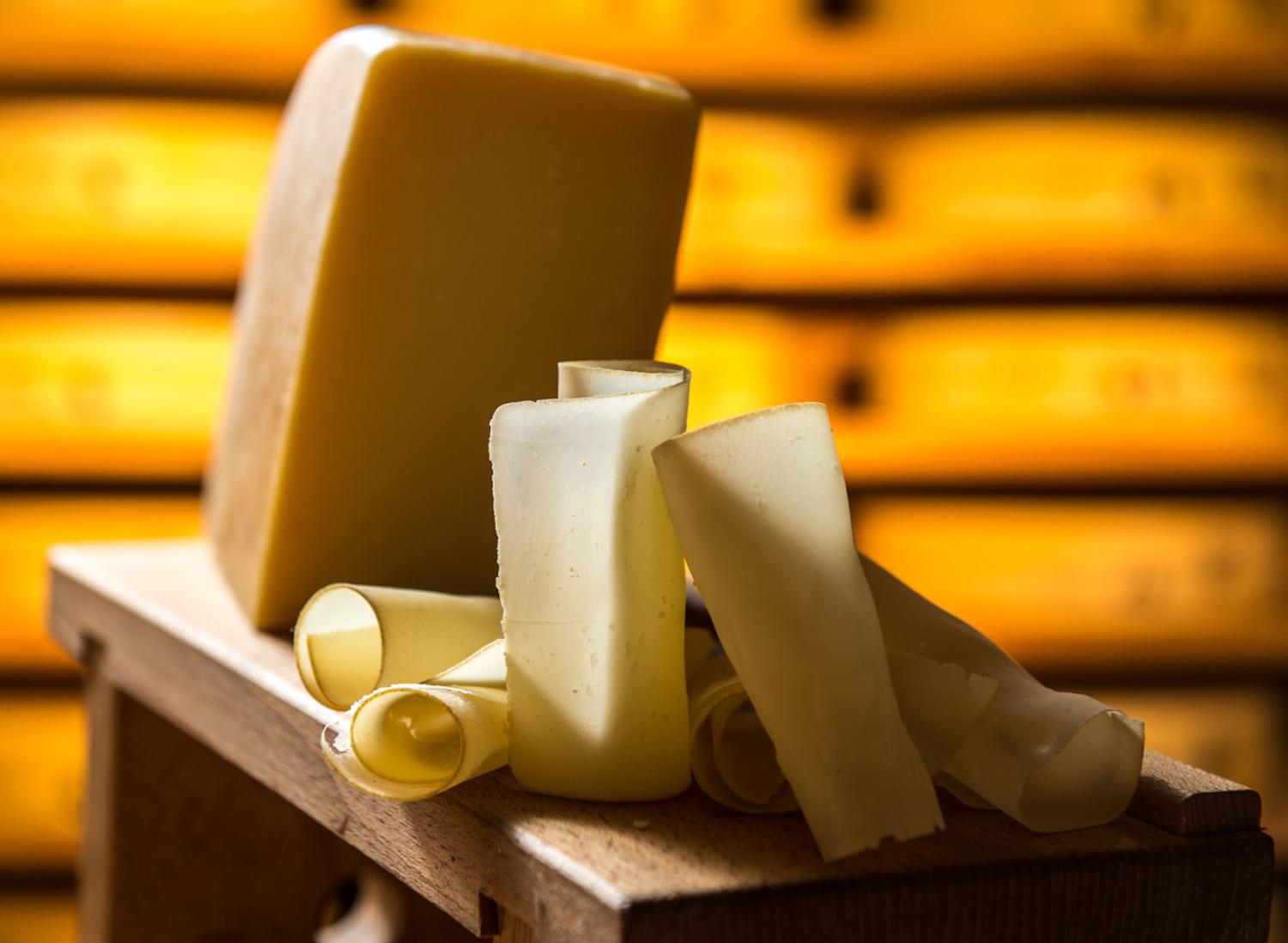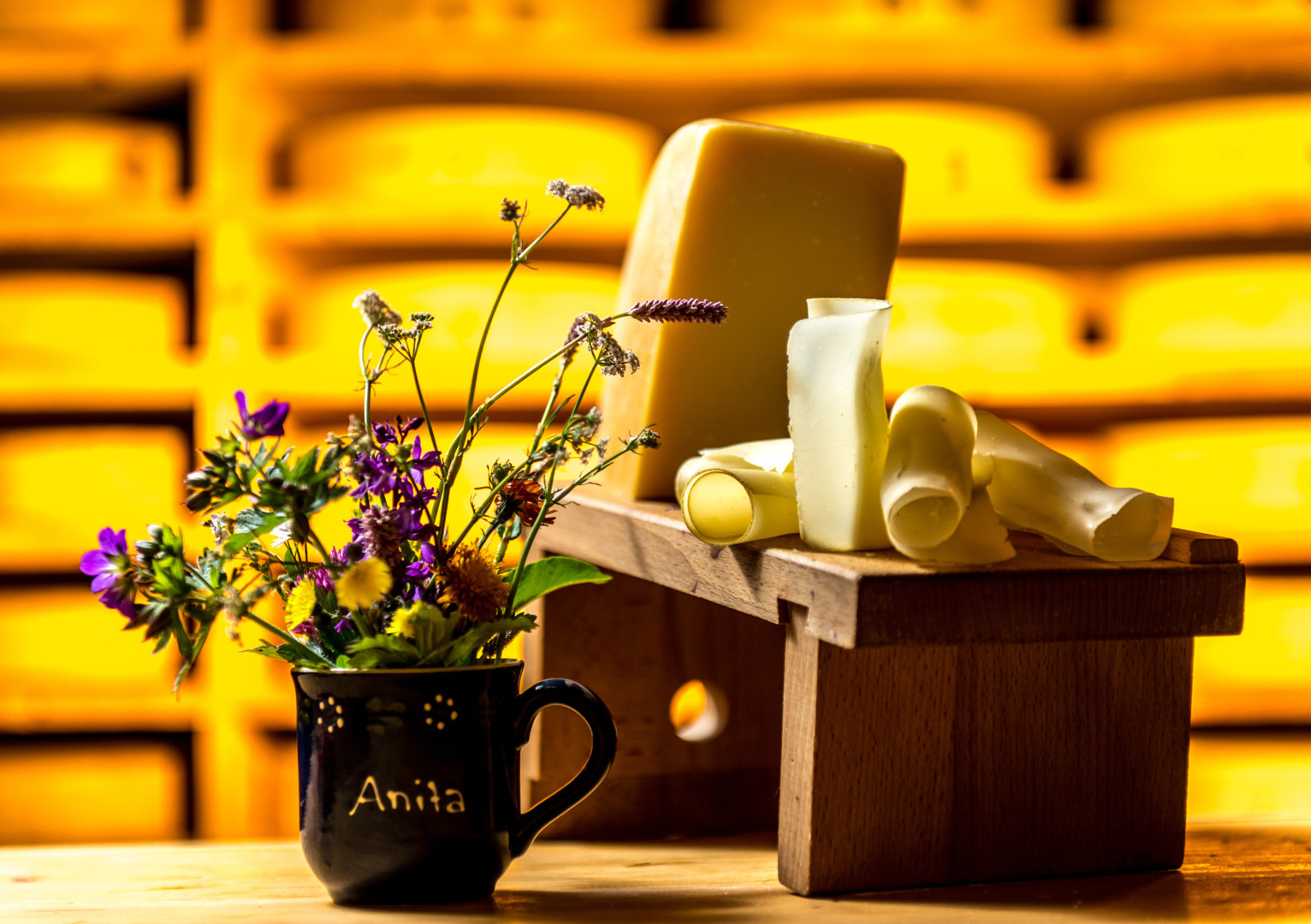Berner Alpkäse AOP is made daily during the summer months using unpasteurised alpine milk.
Berner Alpkäse and Berner Hobelkäse AOP
Berner Alpkäse AOP is made daily during the summer months using unpasteurised alpine milk. The dairy cattle source the majority of their food from the plants growing on the summer meadows. The milk is turned into cheese in a copper vat, which is heated either directly or indirectly by a wood fire. After being pressed, the cheese is stored in a saturated bath of brine for a day. The wheels are then rubbed with salt and smear water on a regular basis. Berner Alpkäse AOP is cultured for at least two weeks during the summer pasture period. By the time it is sold, it is at least 4.5 months old. The Berner Alpkäse AOP wheels selected for Berner Hobelkäse AOP finishing come solely from businesses with the quality class “Surchoix” and have been held within the geographical area for the entire maturation period. The selected wheels are stored in cellars for at least six months. The rind smear is removed cleanly before the wheel is finished for a minimum further 12 months in a hall with a natural climate or in an artificially air-conditioned space.
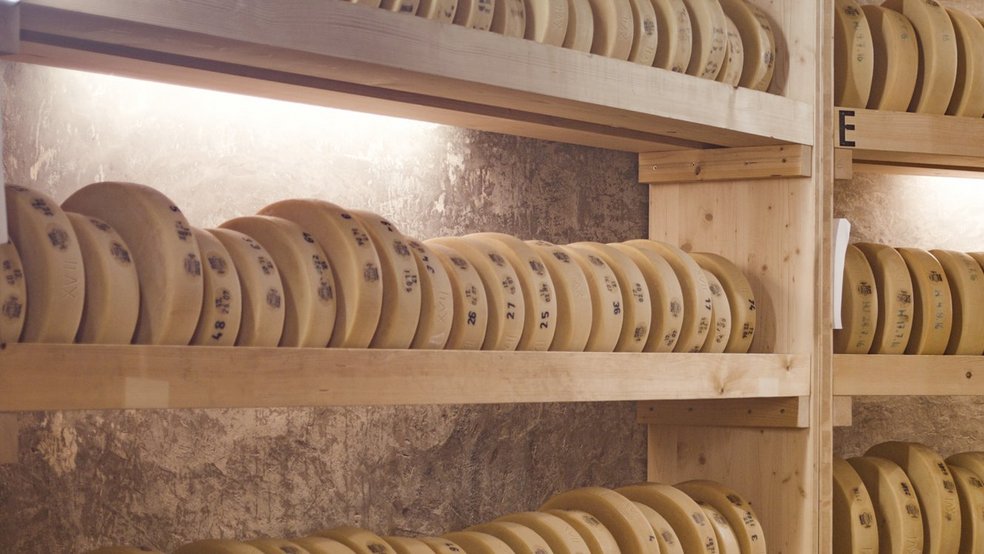
History
Rennet creameries date back to around 1500 in the Bernese Oberland Alps. The Stumpf Chronicle (1548) mentioned the particular quality of the Alpkäse (alpine cheese) from this region, citing the names “Sibenthaler” and “Saanerkäss”. In the 17th century, the production of Alpkäse became of great economical importance in the Bernese Oberland. The production methods used today differ only very slightly from the instructions stipulated for alpine dairies back in 1872. Hobelkäse comes from a tradition of drying foods to make them last longer.
Berner Alpkäse AOP is made daily during the summer months using unpasteurised alpine milk.
